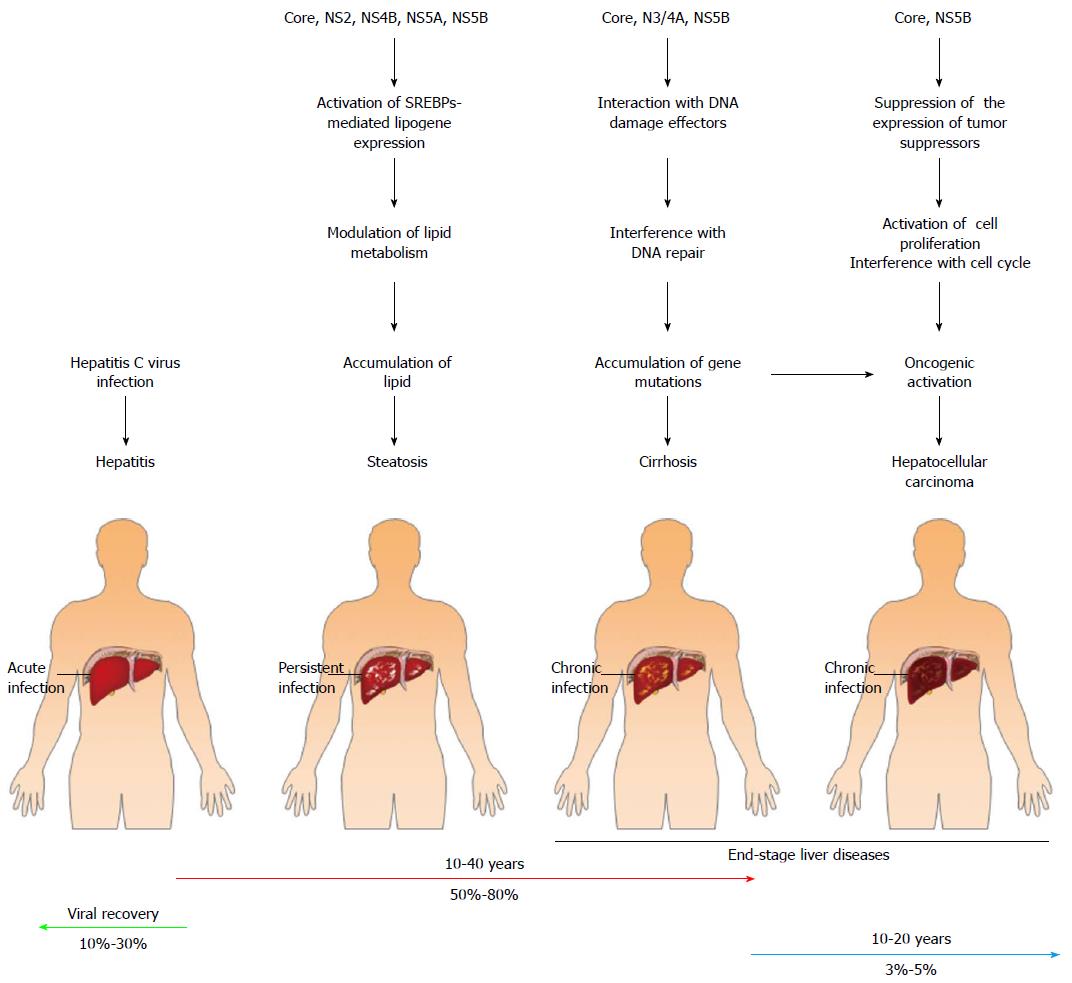Copyright
©2014 Baishideng Publishing Group Inc.
World J Gastroenterol. May 21, 2014; 20(19): 5773-5793
Published online May 21, 2014. doi: 10.3748/wjg.v20.i19.5773
Published online May 21, 2014. doi: 10.3748/wjg.v20.i19.5773
Figure 3 Contribution of viral proteins to the pathogenic changes leading to hepatitis C virus-related liver diseases.
After acute hepatitis C virus (HCV) infection, approximately 10%-30% of cases will spontaneously recover, whereas the majority of HCV infection cases (approximately 50%-80% of infected cases) become persistently infected. Chronically HCV-infected hepatocytes in the livers of these patients progress into hepatosteatosis and liver cirrhosis. Ultimately, some (approximately 3%-5%) of the chronically infected individuals develop end-stage liver disease, i.e., hepatocellular carcinoma. The potential contributions of the viral proteins to the development of HCV-associated liver diseases are shown. The HCV core protein and the NS2, NS4, NS5A, and NS5B proteins can promote hepatic steatosis by mediating the clustering of LDs and regulating the SREBP-mediated transactivation of lipogenes, respectively. The binding of core and NS5B to tumor suppressors downregulates the expression of these tumor suppressors, thus activating cell proliferation and interfering with cell cycle progression. Moreover, HCV core, NS3/4A, and NS5B can bind to DNA damage response-associated effectors, thereby inhibiting the DNA repair mechanism and inducing genome instability. Deregulated cell growth, cell cycle progression, and genome instability may, in turn, trigger oncogenic activation in infected cells, which finally leads to the development of hepatocellular carcinoma.
- Citation: Ke PY, Chen SSL. Autophagy in hepatitis C virus-host interactions: Potential roles and therapeutic targets for liver-associated diseases. World J Gastroenterol 2014; 20(19): 5773-5793
- URL: https://www.wjgnet.com/1007-9327/full/v20/i19/5773.htm
- DOI: https://dx.doi.org/10.3748/wjg.v20.i19.5773









